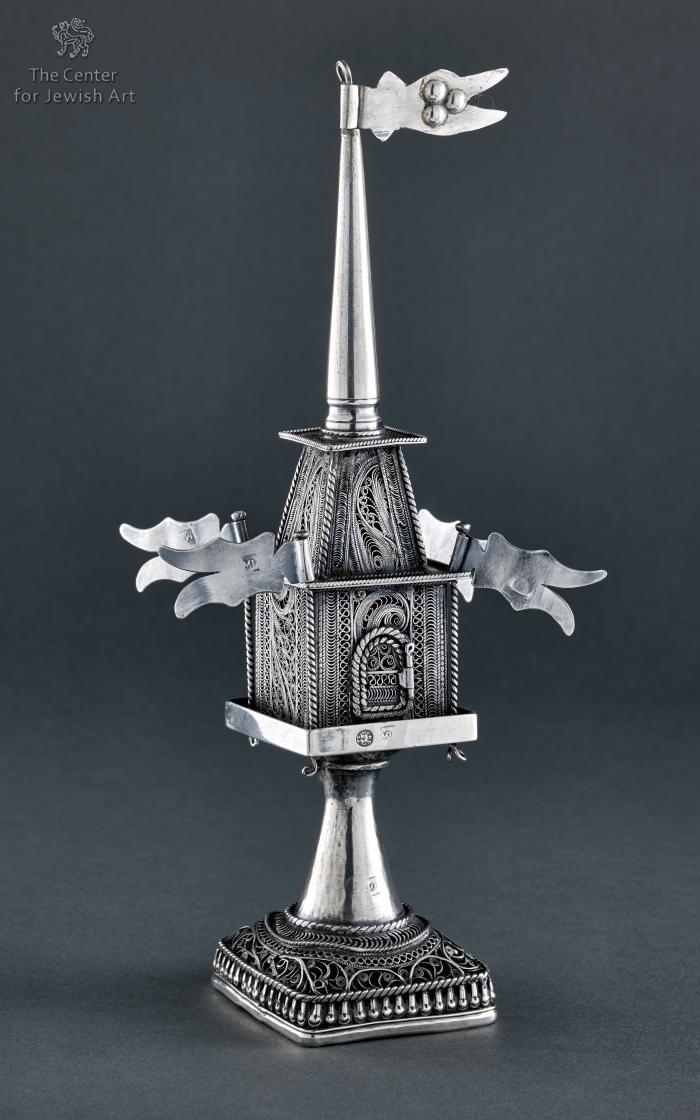Obj. ID: 35556 Besomim, Budapest, 1831

sub-set tree:
The following description was prepared by William Gross:
In Jewish tradition, the end of the Sabbath and other Jewish Holidays is marked by the ceremony of Havdalah (Separation) that differentiates between the Holy nature of the holiday and the profane nature of the following day. This ritual is accomplished by lighting a special candle with several wicks, drinking wine from a cup, and the inhalation of the sweet smell of spices. In the Ashkenazi world, these spices were usually held in a container which was often shaped in varying forms.
Besomim made in Hungary are quite unusual. In the catalog of the Jewish Museum in Hungary, there are 11 Besomim or which only 3 are from Hungary. This example, fashioned in Budapest in 1831 closely resembles similar filigree types from Poland, the Czech Republic, and Ukraine. The construction has both sheet silver and filigree elements in combination. The filigree is particularly fine craftsmanship compared to others of the same form. There are four bells missing from the corners, but the flags all appear to be original.





